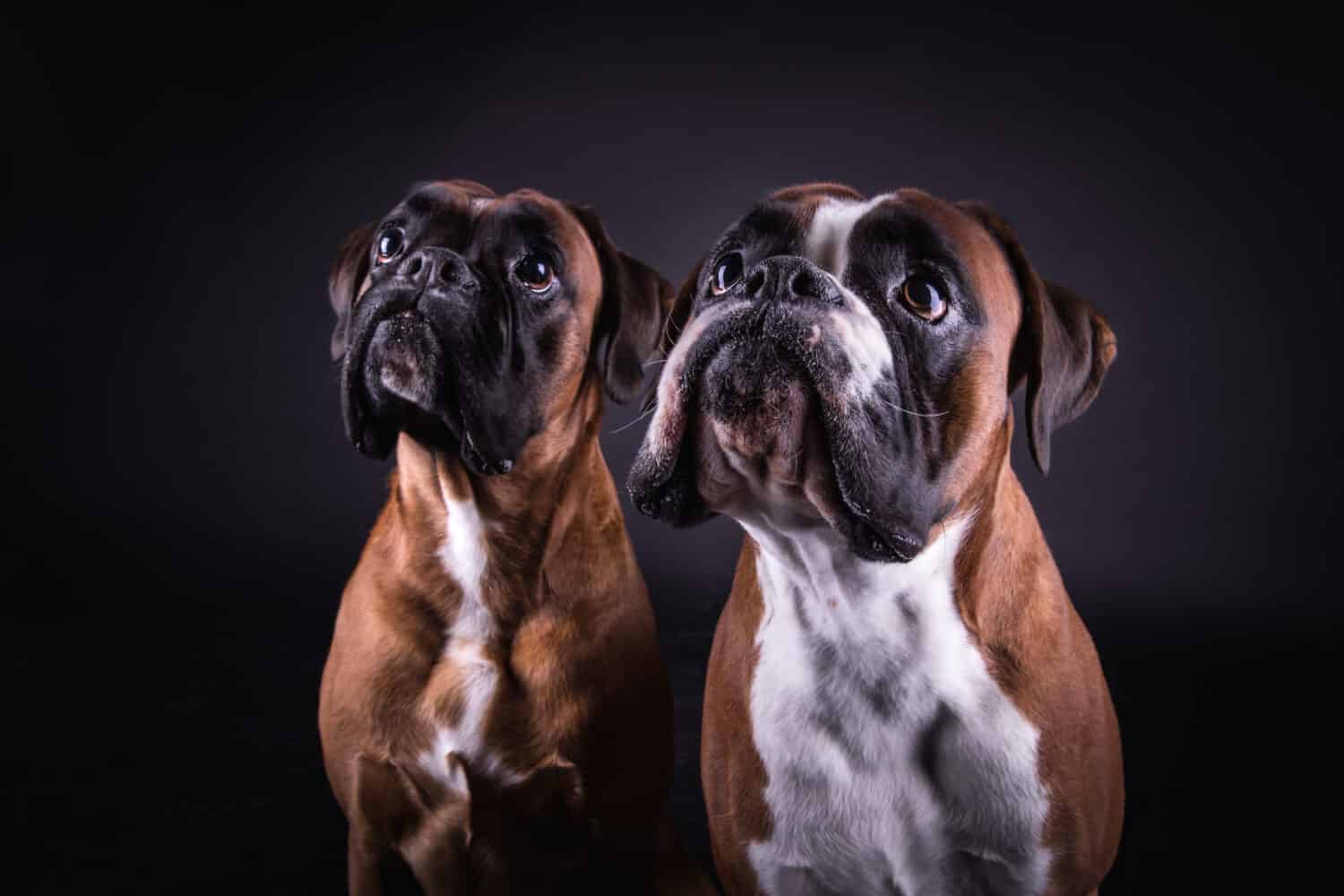The boxer is a loyal, loving family member who is both handsome and intelligent. If you’re considering adding a boxer to your family, you’ll find it hard to distinguish between male and female of the breed as a casual observer. But the breed does have a few key differences between sexes that you should keep in mind before bringing one home.
4 Key Differences Between Male and Female Boxers
The main differences between male and female boxers are size, temperament, sexual maturity, and trainability. These differences may be slight, yet they can be enough to sway your decision between choosing a male or female. Take a look at the four key differences between the two so you can make the best decision for your family.
| Male Boxer | Female Boxer | |
|---|---|---|
| Size | 23 to 25 inches tall; 65 to 80 lbs | 21.5 to 23.5 inches tall; 50 to 65 lbs |
| Temperament | Outgoing, protective, clingy | Reserved, independent |
| Sexual Maturity | 12 to 15 months | 18 to 24 months |
| Trainability | Slightly more difficult | Slightly easier |
Size Differences

While male boxers are usually larger than females, that isn’t always the case.
©Gabor Kormany/Shutterstock.com
Male boxers are the larger of the two, averaging 23 to 25 inches tall at the shoulders. Females measure 21.5 to 23.5 inches tall. Naturally, since the male is taller, he also weighs a bit more at 65 to 80 pounds, while the female weighs approximately 15 pounds fewer.
Temperament

Boxers are wonderful family companions, regardless of sex.
©xkunclova/Shutterstock.com
Boxers, in general, are friendly, outgoing dogs, but females are a bit more reserved than males of the breed. At the same time, males tend to be more protective than females. Yet, while males may be more outgoing, they can also be clingier with their human companions than females, who are more independent and quite happy to have alone time.
It’s important to note that while male and female boxers may get along fine together, some people have found that having two boxers of the same sex is a bit challenging. Training is important to ensure everyone behaves properly if you decide to own two boxers.
Sexual Maturity

The average litter size for boxers is five to seven puppies.
©Dariusz Banaszuk/Shutterstock.com
Boxers are slow to mature. It takes male boxers 12 to 15 months to reach full sexual maturity, but they are fertile as young as six months. Female boxers, on the other hand, reach sexual maturity around 18 to 24 months of age. While the female may be fertile at six months old, it is safest for her if you wait until she’s had at least two heat cycles before breeding.
If you plan to breed your boxer, understand that the AKC prefers that females be bred only between 18 months and six years. They will not allow litter registration from a female less than eight months old or more than 12 years old at the time of mating, or by a male less than seven months old or more than 12 years old at the time of mating.
Consider, too, if you don’t plan to breed your dog, it is less expensive to have a male neutered than it is to have a female spayed.
Trainability
Boxers are smart dogs that usually take to training very well as long as you keep it interesting. Generally, females are a bit easier to train than males, but this isn’t a hard and fast rule.
The keys to successful training are ensuring that you socialize your dog well as a puppy and that they know you’re the boss. You will get good results regardless of sex if your boxer doesn’t get bored and you make training a fun experience.
Male vs. Female Boxer: Which Is Right for You?
The differences between male and female boxers are minor, but they may be enough to determine your personal preference. Whichever you choose, you’ll have a smart, loyal, playful family member for many years.
The photo featured at the top of this post is © Gabor Kormany/Shutterstock.com
Ready to discover the top 10 cutest dog breeds in the entire world?
How about the fastest dogs, the largest dogs and those that are -- quite frankly -- just the kindest dogs on the planet? Each day, AZ Animals sends out lists just like this to our thousands of email subscribers. And the best part? It's FREE. Join today by entering your email below.
Thank you for reading! Have some feedback for us? Contact the AZ Animals editorial team.






